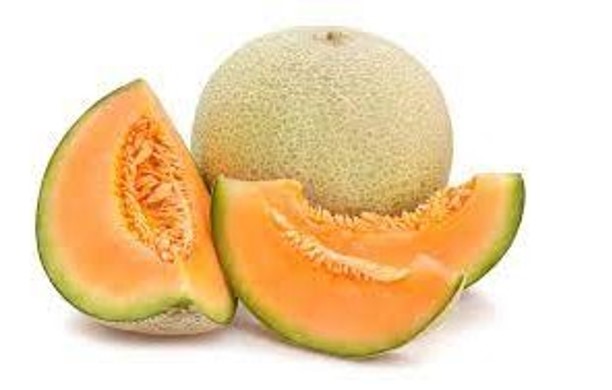A client on digitalis has a lab report of potassium 3.0 mEq/L.
The nurse would instruct the client to eat which of these foods?
Asparagus.
Cantaloupe.
Blackberries.
Cucumbers.
Cucumbers.
The Correct Answer is B
The client on Digitalis has a low potassium level of 3.0 mEq/L, below the normal range of 3.5-5.0 mEq/L. Low potassium levels can increase the risk of digitalis toxicity, which can cause nausea, abdominal discomfort, visual changes, and cardiac arrhythmias.
The nurse would instruct the client to eat foods high in potassium, such as cantaloupe, to prevent or correct hypokalemia.

Choice A. Asparagus is wrong because asparagus is a low-potassium food that contains only 202 mg of potassium per cup.
Eating asparagus would not help to raise the client’s potassium level.
Choice C. Blackberries are wrong because blackberries are also a low-potassium food that contains only 233 mg of potassium per cup.
Eating blackberries would not help to raise the client’s potassium level.
Choice D. Cucumbers is wrong because cucumbers are a very low-potassium food that contains only 76 mg of potassium per cup.
Eating cucumbers would not help to raise the client’s potassium level and may even lower it further.
Nursing Test Bank
Naxlex Comprehensive Predictor Exams
Related Questions
Correct Answer is B
Explanation
Select a 0.5 mL syringe, 30 gauge, 8 mm needle and inject at a 90-degree angle. This is because Humulin R is a clear and colorless solution that can be given by subcutaneous injection.
A 0.5 mL syringe can hold up to 50 units of insulin, which is enough for the prescribed dose of 7 units. A 30 gauge, 8 mm needle is suitable for thin patients with poor skin turgor. Injecting at a 90-degree angle ensures that the insulin reaches the subcutaneous tissue and not the muscle.
Choice A is wrong because a 31 gauge, 6 mm needle is too short and may not deliver the insulin into the subcutaneous tissue.
Choice C is wrong because pinching the skin is not necessary for thin patients with poor skin turgor.
Choice D is wrong because a 1.0 mL syringe is too large for the prescribed dose of 7 units and may cause dosing errors. A 28 gauge, 12.7 mm needle is too long and may inject the insulin into the muscle, which can affect its absorption and action.
Correct Answer is C
Explanation
This is because it shows a normal pH, pCO2, HCO3 and pO2, indicating that the treatment has been effective in restoring normal gas exchange and acid- base balance.
Choice A is wrong because it shows a low pH, high pCO2 and high HCO3, indicating a mixed respiratory and metabolic acidosis.
Choice B is wrong because it shows a low pH, high pCO2 and low HCO3, indicating a combined respiratory and metabolic acidosis.
Choice D is wrong because it shows a high pH, low pCO2 and low HCO3, indicating a mixed respiratory and metabolic alkalosis.
The normal ranges for arterial blood gas (ABG) are:
- pH: 7.35 – 7.45
- pO2: 10 – 14 kPa or 75 – 105 mmHg
- pCO2: 4.5 – 6 kPa or 34 – 45 mmHg
Whether you are a student looking to ace your exams or a practicing nurse seeking to enhance your expertise , our nursing education contents will empower you with the confidence and competence to make a difference in the lives of patients and become a respected leader in the healthcare field.
Visit Naxlex, invest in your future and unlock endless possibilities with our unparalleled nursing education contents today
Report Wrong Answer on the Current Question
Do you disagree with the answer? If yes, what is your expected answer? Explain.
Kindly be descriptive with the issue you are facing.
